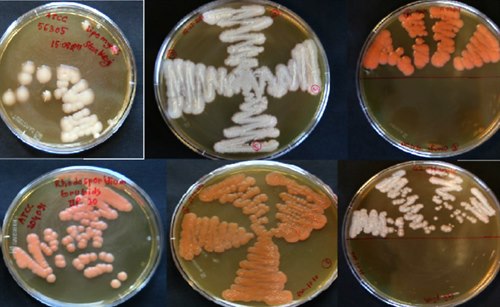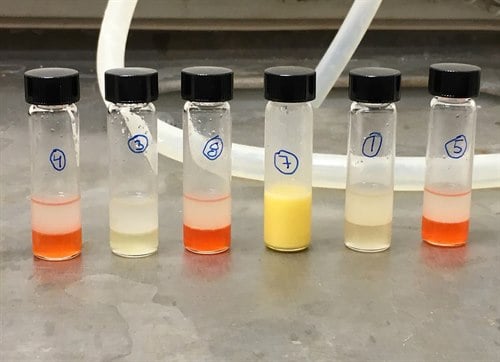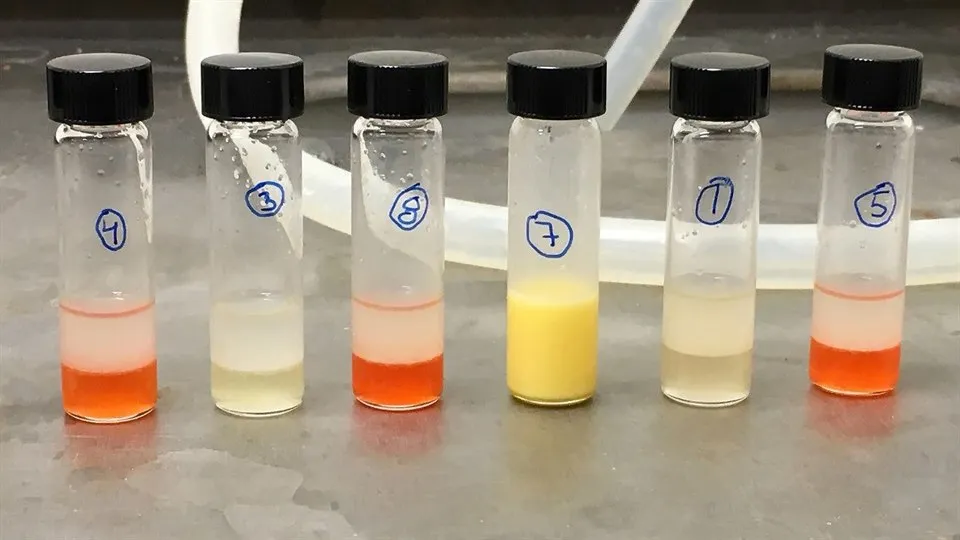Yeast fungi can contribute to the production of biodiesel and fatty acids
In the GreenPro project we study and develop green products from the forest industry in a lab scale. The goal is to transform different residues from forest to biofuels and fatty acids with higher economic value than current residues.
One goal is to adapt a yeast-based process to pilot scale for the production of next-generation fish feed. Another goal is to adapt a yeast based process to a pilot scale for the production of fatty acids tailor-made for biodiesel production.
"The goal of my work in the project is to find out which chemicals yeasts produce or break down as they grow on different materials from the forest. In the project, we allow different yeast fungi to grow and develop in lab scale on residual material from the forest industry, "says Dr. Erika Wallin, researcher in chemistry with a focus on chemical analysis and chemical production at Mid Sweden University.
"There are yeast fungi that are capable of making fat and from these fat we can extract fatty acids. In the project, we have purchased two yeast fungi that are common to use for the production of fatty acids for, for example, biodiesel, and part of the project is also about isolating yeast sponges and seeing which ones are best placed to become commercially viable in the long run.
Yeasts from nature are grown and studied
During the summer of 2017, "yeast traps" were found in nature. The idea was to study whether wild fungi found naturally in the forest could also grow into and manufacture fats from that type of residue we would like to use in our experiments. The yeast traps were picked up at the lab and our biologists Svante Holm, associate professor, and Irin Fahmidazaman, PhD student, isolated yeast from these traps. In the first round 9 different yeast fungi were isolated. These were grown on petri dishes, see picture below, with nutrients in lab scale. The first goal, purely chemical, was to find out how much fatty acids these yeasts produce. The dried yeast mass was weighed and extracted according to Folch extraction.

Yeast fungi isolated from nature and cultivated in the laboratory at Mid Sweden University.
"In the extraction we saw that the fungis were slightly different, they had a little different color and when adding water, we got two clear phases for all yeasts, except one as shown in Figure 2 below," says Erika Wallin. The new yeast sponges that Svante and Irin isolated seem to produce between 3 and 11 percent fat. The yeast fungus that produced the most fat in our measurements was yellow (see picture with glass cans), sometimes it can be difficult to get two phases when there are many fatty acids in the mixture.
In spring 2018, there were additional fresh yeast traps in the forests and Irin has now isolated about 40 yeast fungi from the traps, so there are now about 50 yeast fungi to continue the research work with.
"The next part is to identify the yeast fungi and examine how they grow on different nutrients, as well as study how much fat the yeast sprouts produce and its constituents. We will grow the isolated yeast fungi on residual material from the forest industry and continue the analysis work in several stages during the autumn of 2018, "says Erika Wallin.

Extraction of fat from yeast fungi. Here is a water layer (top) used to wash the lower layer containing yeast fungus fats.
Biodiesel and fish feed
Part of the project is about the production of biodiesel and one way to make biodiesel is to start from products that contain a lot of fat. Today, for example, residues from the food industry are used, mainly frying oil for this purpose.
Another part of the GreenPro project is about fish feed production. One wants to investigate whether a fish feed containing a lot of protein can be manufactured, and hope that they will also contain some good cats such as omega-3 or omega-6. The yeast fungi used in the studies will thus be investigated with regard to several different products.
In the project GreenPro, researchers at the Research Centre FSCN collaborate with the University of Gävle and several companies in the region, including Colabitoil, which produces biodiesel. In the studies about yeast fungi, Erika Wallin has collaborated with the biologists Svante Holm, Associate Professor, and Dr. Fredrik Carlsson and PhD student Irin Fahmidazaman. For the chemical analyzes, Professor Dan Bylund, Dr. Madelen Olofsson and Dr Sara Norström takes part in the research work. Fredrik Carlsson and Mattias Edman also participate as researchers in the project. They are responsible for the design and cultivation of yeast fungi.
